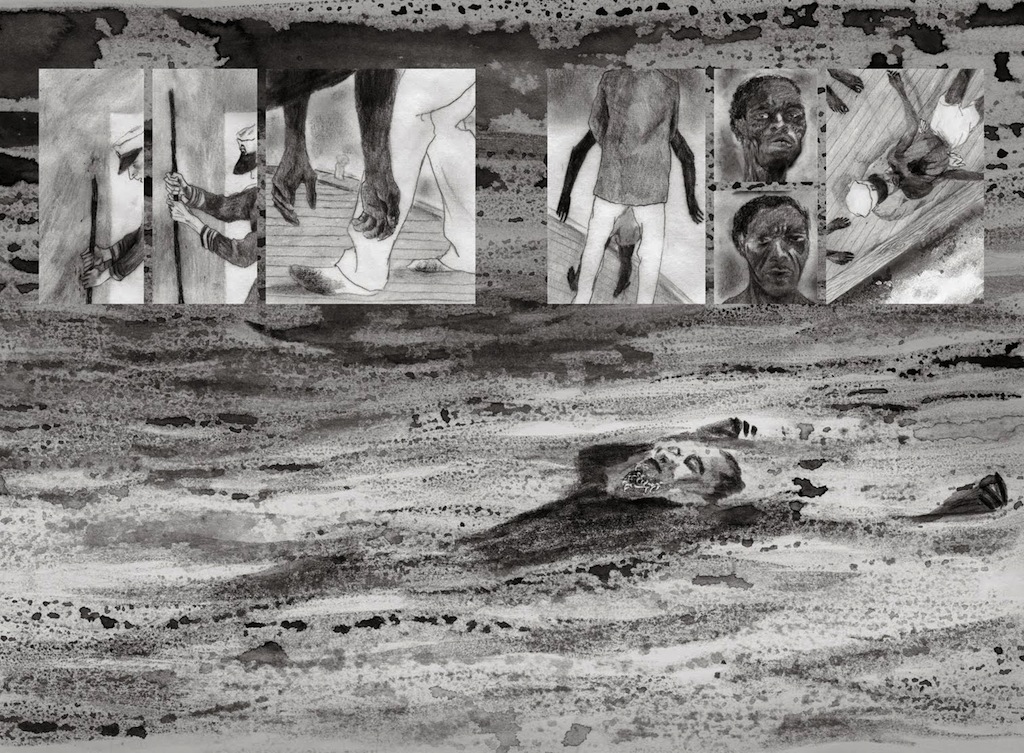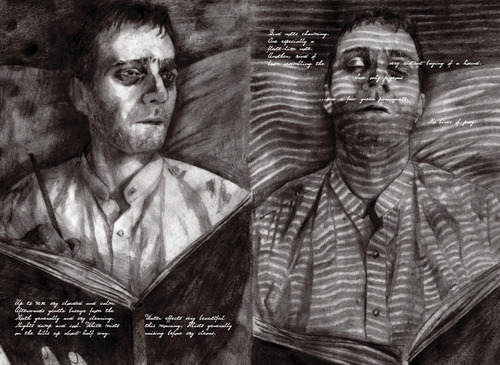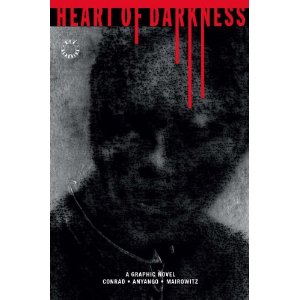No, not Dick Cheney! Although if he had read the book maybe he would have identified in himself the paternalistic arrogance of imperialism and would have understood how 20th century leaders with visions of creating new models for humans through misplaced idealism putrefied into savagery and madness were usually disappointed by the response of those that they wanted to transform, or “save”. And if more Americans had read the book, it may not have been so easy for the literally heartless former Vice President to invade Iraq under the guise of the absurd utopian illusion that the Iraqis wanted our blue jeans and our Hot Pockets. It is, of course, Conrad’s most enduring novella, an easy read, a slim 80 pages that reads like an endlessly re readable poem. But since it’s now available in a comic book, maybe more American readers will be able to follow along, although probably not the illiterate and sub-human Dick Cheney.
The enigmatic Mr Kurtz’ dying words,”the horror, the horror”, have become the epitaph of the West’s uneasy and exploitative relationship with Africa. And everything else. Who doesn’t use this quote to add gravitas – accurately or inaccurately – to any situation? The Bush presidency, the 2009 post season, the Twilight series, etc. Besides the use, over use and misuse of that quote, the Edwardian novella’s references and influences and continuing relevance in the 108 years since it was published in all forms of media are vast, spawning radio, theatre film and television adaptations. It infected Ronan Bennett’s The Catastrophist and two of John le Carré’s novels, The Constant Gardener and The Mission Son, Nick Davies’ Dark Heart, Sven Lindquist’s Exterminate All the Brutes, Michaela Wrong’s In the Footsteps of Mr Kurtz, and Tim Butcher’s Blood River. Quoting the phrase: “Mistah Kurtz, he dead.†expanded TS Eliot’s The Hollow Men’s readership.
In 1975, Chinuah Achebe publicly denounced Conrad’s tale as so intensely racist that he questioned how it could represent one of the most highly acclaimed short novels ever written. The book inspired a surprisingly non reductive puppet version and an upcoming chamber opera in one act by Tarik O’Regan. Marlow’s story has mutated and transformed over the years thanks to failed retellings by Orson Welles (the first screenplay he ever wrote), and most famously, the grandiose epic  Apocalypse Now – to the extent that it is now all but impossible to write about the book without at least googling “Coppola”. A Simpsons episode  is titled Bart of Darkness despite the fact that the story is not an interpretation of the book at all. Recent offensive popular cultures homages include the horrible television show “Lost” (“The horror, the horror”).
But if you missed all that, you can read the comic book! Sorry, the graphic novel. The Eye Classics series  – an imprint of Self Made Hero, an independent graphic novel publisher based in London just released the title next month.
David Zane Mairowitz and Swedish/Kenyan illustrator Catherine Anyango provide the artwork in monochrome pages, dark and rich and fizzing with meaning, full of ambiguous language and brutally nightmarish images. The first page of the graphic adaptation begins at the end – with the strange abstract sight of what Marlow sees in the The Thames Essex Marshes, ‘an overcast sky’ that ‘seemed to lead into the heart of an immense darkness’.  It goes on to provide, through richly intricate pencil drawings, a deeply atmospheric interpretation of Conrad’s dense style. The duotone illustrations bleed onto the edges of the page, not leaving any blank space. Even the narrative captions appear as “engraved†on the very fabric of the textual darkness, and the speech balloons are translucent, like dreamy, spectral echoes of voices. The detailed drawings disintegrate to abstraction as Marlow travels further towards the dying Kurtz and into the heart of darkness…..(dramatic music sting).
Anyango and Mairowitz reinforce the geographical and historical immediacy of Conrad’s tale by interspersing excerpts from The Congo Diary – the journal Conrad kept of his 1890 voyage up the river.
“The mind of man is capable of anything – because everything is in it, all the past as well as all the future. What was there after all? Joy, fear, sorrow, devotion, valour, rage – who can tell? – but truth – truth stripped of its cloak of time. Let the fool gape and shudder — the man knows, and can look on without a wink.â€
Publisher: TURNAROUND PUBLISHER SERVICES  RRP: £12.99  Publication Date : 15/09/2010 ISBN: 9781906838096




